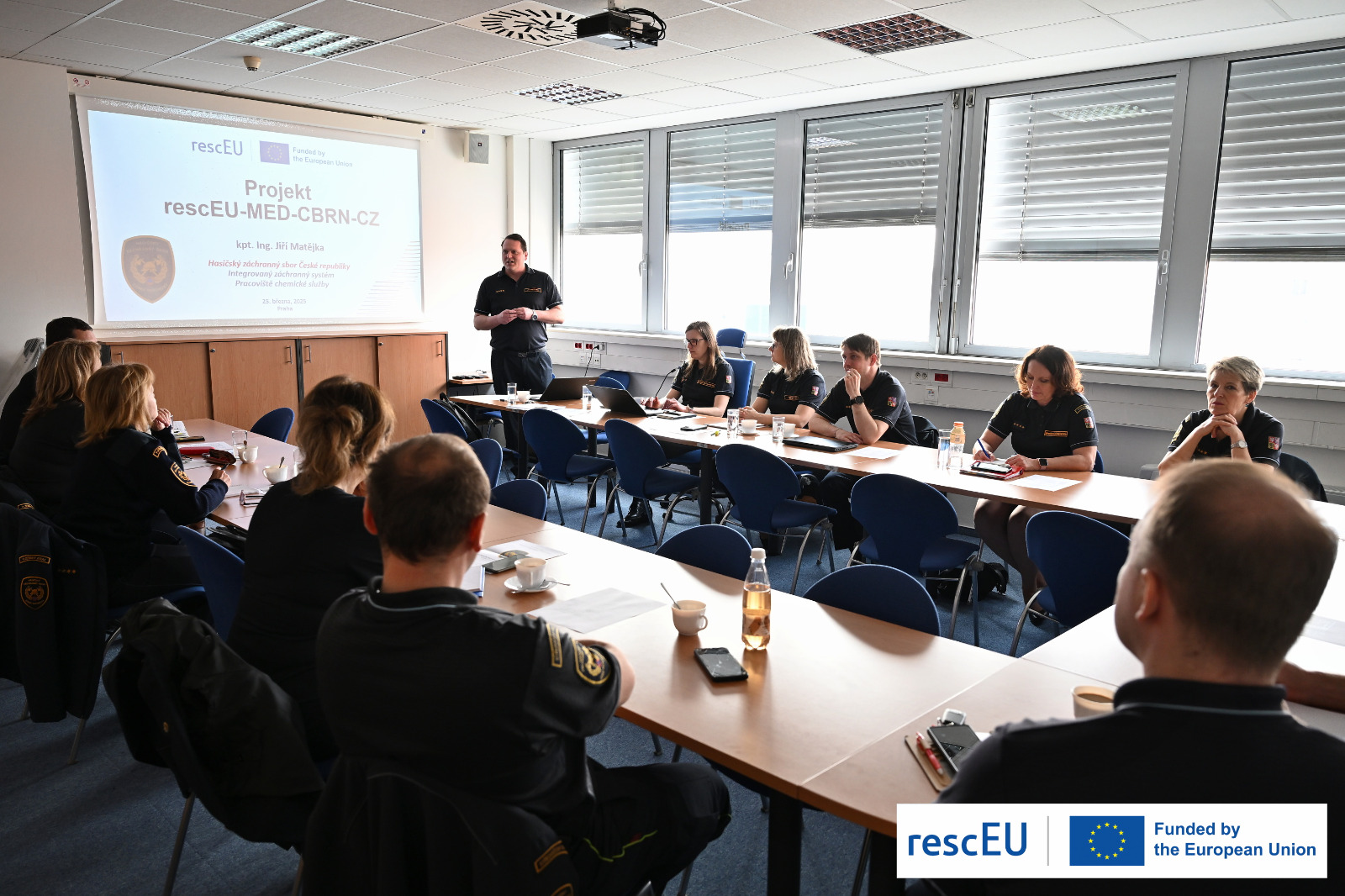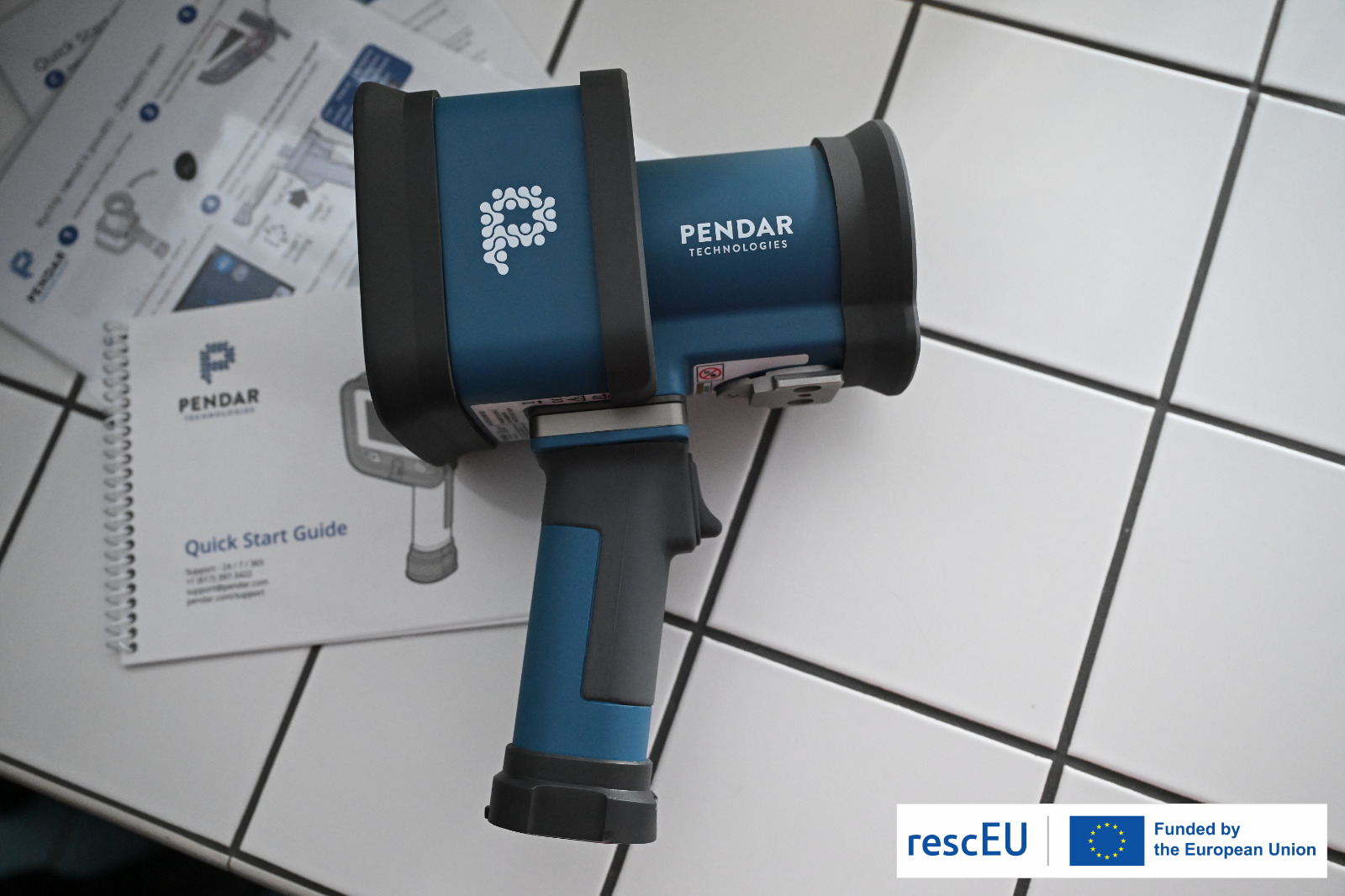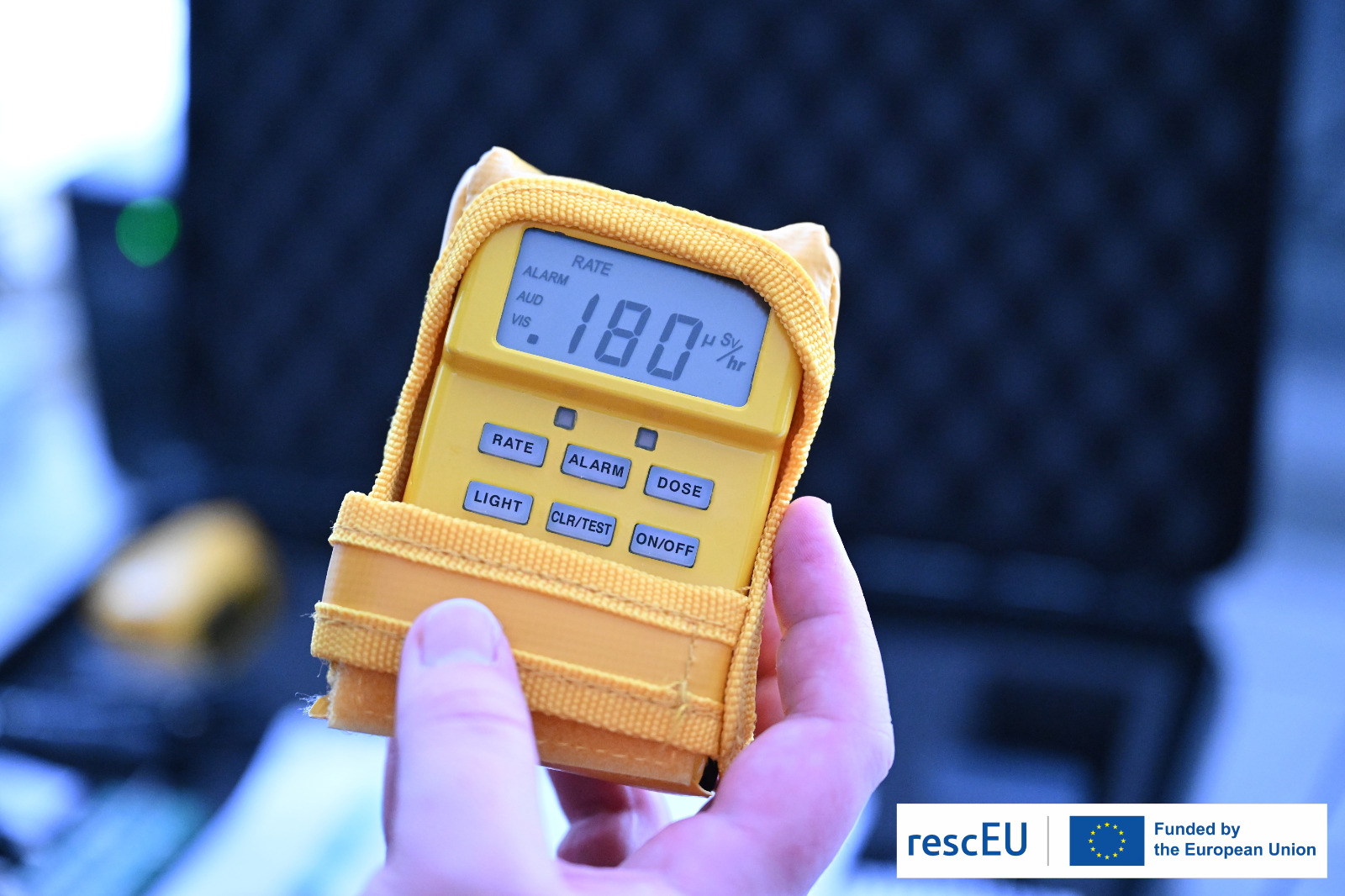Czech Fire Rescue Service Laboratories Receive Unique Equipment for Detecting and Identifying Hazardous Substances
9. 5. 2025 (KO) - The chemical laboratories of the Fire Rescue Service of the Czech Republic and the Technical Institute of Fire Protection have received five types of specialised equipment. These include high-performance spectrometers, pollutant detectors, and radiation monitors. These unique devices are intended to protect EU citizens against hazardous substances and have been entrusted to Czech firefighters within the rescEU-MED-CBRN-CZ project, coordinated by the Ministry of the Interior – General Directorate of the Fire Rescue Service of the Czech Republic. The project is part of the EU Civil Protection Mechanism.
The aim of the rescEU-MED-CBRN-CZ project is to establish and maintain a stockpile of equipment for the detection, sampling, identification, and monitoring of chemical, biological, radiological, and nuclear (CBRN) hazardous substances. The project will run until the end of September 2026, with a budget exceeding €14 million. This covers the purchase, insurance, and maintenance of the instruments as well as personnel training. The costs are fully covered by the European Union (excluding VAT). The grant recipient is the Ministry of the Interior – General Directorate of the Fire Rescue Service of the Czech Republic.

As part of the project, six specialised equipment stockpiles will be established across the Czech Republic, housed within the chemical laboratories of the Fire Rescue Service and the Technical Institute of Fire Protection. Each stockpile will gradually receive a total of 34 instruments and tools to be used during emergencies involving confirmed or potential CBRN threats. All devices can be used in the field, inside buildings, or for mobile monitoring.
Training is already underway with the first batch of newly delivered equipment. One of the most noteworthy instruments now available to firefighters is the THREAT ID spectrometer. It uses Fourier Transform Infrared (FTIR) spectrometry to identify more than 23,000 solid and liquid substances, as well as 5,500 different gases and vapours.
Other unique instruments acquired through the project include the portable handheld spectrometers Pendar X10 and XplorIR. The Pendar X10 can identify approximately 6,000 solid and liquid substances. Its database contains narcotics, industrial pollutants, explosives, and highly toxic agents, including Novichoks—nerve agents. The device uses so-called Stand-Off Raman spectrometry, allowing non-contact measurement of samples from a distance of up to two meters. This eliminates the need for physical handling: firefighters can analyse potentially hazardous substances through transparent or semi-transparent containers. The laser is safe enough to avoid damaging the container or causing environmental contamination or an explosion.
The XplorIRspectrometer uses FTIR spectrometry and fills a gap in the detection and identification of gases and vapours during industrial accidents. It can continuously analyse airborne substances directly within hazardous zones. It is particularly effective in detecting leaks, tracing their origin, or identifying substances by the vapours they emit, and it is very user-friendly. Czech firefighters are the first in the country to use this model.
Each of the six specialised Fire Rescue Service laboratories has received six units of each spectrometer, ensuring even distribution across the country. The same applies to the fourth advanced device, the NEO WatchGas, a portable handheld photoionisation detector for gases and vapours. It is well suited for detecting volatile organic compounds and toxic industrial pollutants.
The final type of equipment to be maintained by the firefighting laboratories is the Ultraradiac-PLUS. A total of 24 units are now in the care of the Fire Rescue Service. These devices primarily serve to detect sources of ionising radiation and help determine safe exposure times in contaminated areas. They provide real-time readings of dose rates and cumulative exposure, support the delineation of hazardous and safe zones, and assist in planning the placement of decontamination stations. Any exceedance of preset thresholds is signalled both visually and acoustically.
All equipment is primarily intended to protect the population of the European Union and can be deployed at any time upon request from any EU Civil Protection Mechanism participant country. The laboratories of the Fire Rescue Service of the Czech Republic are responsible for safeguarding and maintaining the equipment in operational condition and may also use it during domestic incidents involving hazardous substances.


PHOTOS and VIDEOS can be foud at the link https://cloudgrh.hzscr.cz/index.php/s/5T6q7sYeBe6Ttxx
MgA. Klára Ochmanová
spokesperson
Ministry of the Interior – General Directorate
of the Fire Rescue Service of the Czech Republic
phone: 775 474 763
e-mail: grh.media@hzscr.cz